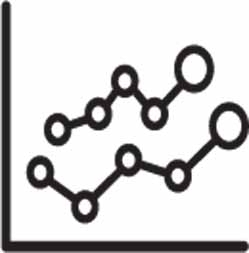|
| Using AI in combination with big data can create economic efficiencies and pro-competitive effects, for instance by making it easier to identify what customers really need and, at the same time, reducing the costs of production and distribution. However, under certain circumstances, it may also be a factor contributing to competition concerns, including: (1) increasing market power and raising barriers to entry; (2) increasing market transparency and facilitating collusion; (3) giving rise to various exclusionary practices available to dominant firms; and (4) merger control issues. (1) Market power
Where access to a large volume or variety of data is important to a particular market, it can form the basis of market power. New entrants are likely to face barriers to entry as they try building up their datasets to compete with those of the incumbents. New entrants may collect data directly from their customers or may also buy access to customer data from third parties. However, collection of data from scratch can be difficult. Where a firm attempts to build these datasets through its own customers, it may struggle if an established firm has already developed a significant network, which has won the trust and/or favour of a significant number of consumers. Equally, a new firm cannot rely on purchasing datasets from third parties, as they may not be willing to part with these assets to competitors. Competition issues are more likely to arise where there is a relatively high level of concentration in the market and/or the likelihood of collusion in the market is higher. However, even a firm with very low “market share” (e.g. based on revenues) but with access to scarce and valuable data may be found to have market power. (2) Collusion
The increasing transparency of prices and characteristics of goods and services can have a positive impact on consumers, giving rise to more informed choices – e.g. Amazon Marketplace allows consumers to compare prices and conditions offered by its hosted retailers. However, the greater availability of information online may also limit competition by facilitating price coordination: in transparent markets, firms can more easily monitor each other’s actions, and frequent interactions enable them to punish deviations. Coordination is more likely to take place in markets where large volumes of pricing data are publicly available and products are relatively undifferentiated, in particular retail, consumer-oriented businesses. In an online environment, the development of sophisticated algorithms has further increased the likelihood of collusion. Algorithms have now been developed which monitor, analyse and even anticipate competitors’ responses to current and future prices. For example, in 2016 the UK Competition and Market’s Authority found that two poster/frame retailers (Trod Ltd and GB eye Ltd) breached competition law by using automated re-pricing software to monitor and adjust their prices, making sure that neither was undercutting the other. As algorithms become more sophisticated (e.g. with machine learning) and data sets become more readily available, the prevalence of such online collusion is likely to increase. (3) Refusal to supply / Exclusivity
Whilst it is rare in practice, a dominant firm may breach competition law if it holds a unique data set which is essential to a third party’s development of new products and refuses to supply that data to third parties. For example, in 2007 the European Court of First Instance (now the General Court) found that Microsoft had breached competition law by refusing to give its downstream competitors access to the minimum interoperability information necessary to allow them to effectively compete in work group operating systems markets. Also, in 2009 the Spanish National Competition Commission fined four electricity companies for refusing to provide access to databases on consumers’ supply points to competitor Centrica. In such cases, under UK/EU law, a dominant firm may be required to share data with a competitor if the data are both unique and necessary for the development of a new product or service in another market for which there is potential consumer demand. (4) Mergers – access to new data
Competition concerns are likely to arise where the combination of two different data troves creates a unique data set, which cannot be replicated by competitors and could become an essential input (i.e. a data set that is essential for a company to compete on a particular market) for customers. The European Commission considered this in the Google/DoubleClick (2008), Facebook/WhatsApp (2014), and Apple/Shazam (2018) mergers, but ultimately concluded that it would not create a competitive advantage as the datasets involved, while commercially valuable, were often not unique and could be replicated. Privacy concerns have also arisen in mergers involving large volumes of personal data (e.g. Facebook/WhatsApp), and in Microsoft/LinkedIn, the Commission acknowledge that data privacy is also an important measure of competition. |







%20(2).jpg?v=3)




Social Media cookies collect information about you sharing information from our website via social media tools, or analytics to understand your browsing between social media tools or our Social Media campaigns and our own websites. We do this to optimise the mix of channels to provide you with our content. Details concerning the tools in use are in our privacy policy.